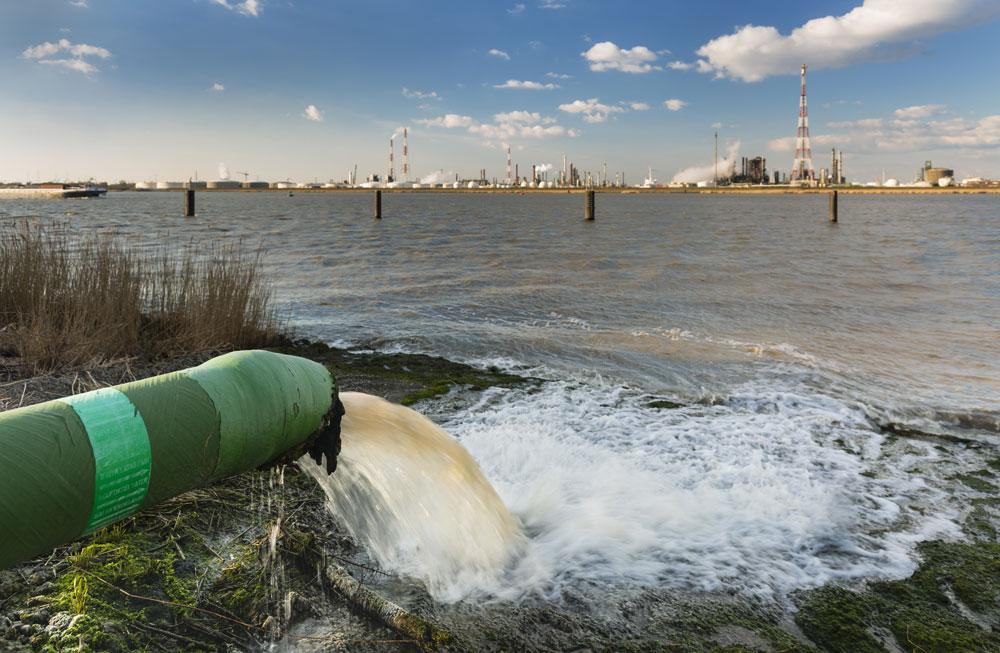03/09/2018 | pH | 3 MINUTE READ
How to Reduce pH Sensor Maintenance (Part 1)

Sensor calibration and maintenance are essential if you want to obtain accurate pH measurements over long use periods. Unfortunately, these activities take up valuable time (and resources). This is especially true in applications like environmental monitoring, where sensors are often installed in remote locations. For example, the Alliance for Coastal Technologies estimates that maintenance costs due to biofouling consume 50% of operational budgets.
The best step you can take to reduce the maintenance requirements for a pH electrode is to select the right sensor for your application. Consider the type of environment you will be monitoring. What contaminants might exist in the water that could interfere with pH sensor functionality? One thing to watch out for is contaminants that coat, cover, or form films on pH glass.
Why you need to clean a pH sensor
Coating is when biofilm or chemical process residue accumulates on the surface of the pH measuring glass. As coating increases, you may notice measurement errors or erratic readings. If you notice atypical readings from your pH probe, you should always test it in a known buffer solution. Your pH probe should read accurately in buffer solution, even if it is somewhat dirty. For example, the sensor should read 7.00 (± 0.20) in 7 buffer.
Coating slows down sensor response time
If coating is a problem in your process, you will notice that while measurements in buffer are accurate, the sensor response time is slow (30 seconds or more). Cleaning your pH probe per its product instruction manual should restore its ability to respond quickly.
Coating leads to reduced span
Reduced span is another sign that coating is an issue in your process. Span is a measure of a pH sensor’s ability to read accurately across the entire pH scale. A sensor with a span of 100% will read 7.00 when placed in 7 buffer and 4.00 when placed in 4 buffer. Typically, a new pH sensor will have a span of 97% or higher, meaning that it reads 7.00 in 7 buffer and reads between 3.90 and 4.10 in 4 buffer. These ranges are acceptable, because pH meters have built in features to compensate for this variation. Span naturally decreases over the electrode’s lifetime. However, a span below 70% indicates that cleaning is required to maintain measurement accuracy.
Reducing pH sensor cleaning requirements
Cleaning your pH sensor can help produce more accurate, stable readings, but it can also be a pain. Cleaning a pH sensor requires removing it from the process, tracking down the right chemicals, and carefully removing any residue.
So, how can you avoid constantly cleaning your pH sensors? If your process contains coating or biofouling contaminants, you may want to consider choosing a pH probe with flat surface glass, instead of a bulb shape. When bulb shaped glass is inserted into a process, the process flow will naturally clean one side of the bulb. However, because flow is required to travel around the bulb shaped surface, build up often occurs on the other side. By contrast, flat surface pH glass can be evenly cleaned by process flow, eliminating work for you.
Fun fact: Sensorex was the first pH sensor manufacturer to introduce flat surface pH glass in 1980. Today, many of our process pH probes, including our economical inline pH probes and modular quick change pH probes, feature flat pH glass with self-cleaning capability.
Want more tips for reducing pH sensor maintenance? Check out part 2 of this series here.
Posted by Dominic O'Donnell on March 9, 2018
Sensorex is a global leader in the design and manufacture of quality sensors for water quality and process applications. The company offers more than 2000 sensor packages for pH, ORP, conductivity, dissolved oxygen, free chlorine, chlorine dioxide, UV transmittance and other specialty measurements, as well as a full line of sensor accessories and transmitters. Its expert technical support engineers solve analytical sensor challenges with custom designs and off the shelf products.




